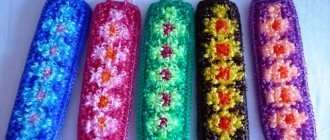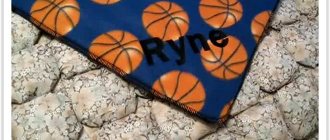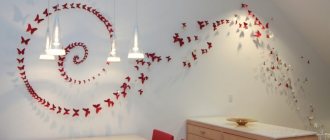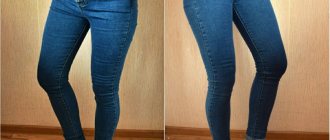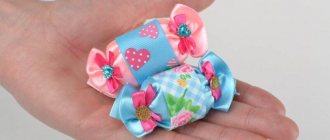Download the women's peasant blouse pattern for free you can use the following links:
Paid sizes:
| Russian size | Bust | Waist circumference | Hip girth | the price of the pattern is 65 rubles, How to buy here? |
| size 40, height 168 cm | 80 | 62 | 86 | |
| size 42, height 168 cm | 84 | 65 | 92 | |
| size 46, height 168 cm | 92 | 74 | 100 | |
| size 48, height 168 cm | 96 | 78 | 104 | |
| size 50, height 168 cm | 100 | 82 | 108 | |
| size 52, height 168 cm | 104 | 85 | 112 | |
| size 56, height 168 cm | 112 | 92 | 120 | |
| size 58, height 168 cm | 116 | 97 | 124 | |
| size 60, height 168 cm | 120 | 101 | 128 | |
| size 62, height 168 cm | 124 | 104 | 132 | |
| size 66, height 168 cm | 132 | 112 | 140 |
* As a result of payment, a file with a pattern is automatically sent to your specified email. If the file has not arrived within 30 minutes, then you need to send a request to search for a pattern . No need to pay again!
Patterns are given without seam allowances.
Having undergone very minor changes, the peasant blouse is again relevant. The ease of tailoring and cutting, the unique combinability with the most varied styles of things make this blouse beloved by many women.
By changing the length of the front and back according to the pattern of a peasant blouse, you can get a youthful crop top and a stylish floor-length dress. The peasant blouse, for all its imaginary pastoralism, is sophisticated and elegant.
Open shoulders and elasticated sleeves create a soft and delicate feminine look.
The composition of the pattern set:
Recommendations for choosing fabric : dress and blouse fabrics, crepe, silk, cambric, staple, gauze, sewing, thin cotton fabrics, etc. Fabric consumption for selected sizes (calculation made for plain fabric):
Measurements of patterns of sample sizes:
#box097
Photos of finished work using this pattern (thanks to the site guests!):
The pattern for the Casket website was prepared by Anna Ivina.
Pattern of “young lady-peasant embroidered shirt”
- Electronic pattern for “young lady-peasant embroidered shirt”
- Sizes: 44-54 and 56-64 - the buyer gets a choice of ALL gradations of sizes.
- File format: PDF in full size and without seam allowances
- Price: $1.5 (payment in the currency of the buyer’s country)
- Sewing difficulty level: beginner - a pattern for beginner tailors who are just starting to learn the art of cutting and sewing.
- The set of patterns includes:
pattern of the back-shelf and sleeves (Fig. 1).
Using this pattern you can sew not only a blouse, but also a tunic or dresses in ethnic style with any sleeve length.
Be careful and before cutting, compare the length of the patterns with the finished dress or blouse of the desired length.
The style of this ethnic blouse, tunic or dress based on the Sapozhkov cut is suitable for most figures. But for those with wide hips and narrow shoulder girdles, it is recommended to wear the finished product, exposing the shoulders.
- Of course, you should take such nuances into account when choosing the sleeve length.
- But for girls and women with sloping shoulders, especially those with a pear-shaped figure, the “peasant lady’s embroidered shirt” is not suitable.
- The fabric consumption for a blouse, dress or tunic “embroidered peasant lady” with a fabric width of 140 cm will be the sum of the lengths of the blouse and sleeves, taking into account the method of processing the drawstrings and hem:
- Di + Dr + drawstring + bottom
- According to rough calculations, this will be about 150 cm, of course, while maintaining the length of the pattern.
- What to make such an ethnic blouse or dress from?
Preference should be given to natural cotton or linen fabrics. Lawn, chintz, thin linen, shirt chintz, and poplin are good options. But silk fabrics, from chiffon to satin, will also look good.
Denim and other heavy, dense materials are not suitable. You can also use stretch fabrics, however, this contradicts traditional ideas about embroidery.
- Instructions
- How to choose a size without using tables and taking measurements
- How to buy a pattern
- How to print a pattern at home in full size on A4 sheets
- How to assemble a pattern after printing
- Embroidered shirt patterns “peasant young lady” 34 – 42 life-size free download
- Cutting and sewing “young lady-peasant embroidered shirt”
- As mentioned earlier, when calculating the fabric consumption, you need to decide on the length of the product, which depends on how you want to wear the embroidery - by pulling the neckline together, as tradition dictates, or by opening the shoulders, as in a “peasant lady” dress.
You also need to know in advance the allowance for processing the drawstring, based on how many laces or elastic bands you want to pull into this drawstring. On average, this allowance will be 2–4 cm.
- If you sew embroidery with a rubber thread, then 1 - 2 cm is enough.
- And processing the upper cut with edging will not require such an allowance at all.
- Let’s say we want to insert just one elastic band, so we’ll add 2 cm along the top, and we won’t add an allowance along the armhole and raglan.
- True, this is not a “real” raglan, but a Sapozhkov cut, but we will call the sleeve sections joining the armhole conditionally “raglan”.
- The remaining allowances are 1 – 1.5 cm.
- Please note that embroidered shirts can be cut with or without a center seam along the back.
- If the fabric is quite dense, for example, linen, then you can make it with a seam along the back, but on thin cambric it is better to move the seam to the side line.
- Now let's look at both cutting options.
- To use the fabric economically, it is advisable to cut it in two steps - first cut out the back flange, then cut out the sleeve.
So, for embroidery with a middle seam (Fig. 2), fold the fabric in half face to face and match the edges.
We cut out the back shelf with seam allowances.
Then, fold the rest of the fabric along the width of the sleeve, as shown in the bubble in Fig. 2. The edges are parallel to each other.
We also cut out the sleeve with seam allowances.
If you want to cut an embroidered shirt with side seams, then the pattern should be cut along the side line (Fig. 3), and the fabric for cutting out the back and front should be folded, bending on both sides.
Material selection
At one time, only natural fabrics such as cotton or linen were used. The advantage today must be given to them. Today, other materials are also used for sewing dresses: wool, jacquard. Chintz, chiffon, poplin, silk or staple fit and look great. Light cambric can also allow you to create unique models.
Linen is an excellent choice for this type of product
Important! You can also use simple knitwear of absolutely any density and quality. The only limitation is that the knitwear has a little stretch.
Sewing will most likely require 2 to 6 meters of fabric. It all depends on the length of the product and the length of the sleeves. That is why before manufacturing it is necessary to accurately measure the amount of material required.
Raglan Peasant Dress
Peasant blouse pattern and master class on sewing the basic version
In summer you always want to dress in lighter clothes. There are many options on the shelves, but it happens that either the size or appearance of the product is not suitable. There is a way out - to sew the desired item yourself. The article offers a pattern for a peasant blouse and a master class on sewing the product.
The considered option is ideally suited for summer, because it is made from light fabrics such as cotton and linen. You can decorate it with various embroidery, appliqués, etc. Even a novice seamstress can cope with this cut.
Let's go to the lesson
First, let's create patterns; to do this, you need to take the following measurements:
- shoulder width - measure horizontally, at the most protruding points of the shoulders;
- chest girth - the tape runs along the protruding points of the chest parallel to the floor, runs tightly to the body, without tension;
- waist circumference - for convenience, place your hand on your waist, identifying the narrowest point. It is along this line that the measurement is made;
- length of the product from the armpit - since our blouse will be held on the shoulders, we measure from the level of the armpits down to the desired length. Moreover, we draw the tape along the center of the front;
- sleeve length - measured from the end of the shoulder to the required length. In our example, this is a ¾ sleeve, so we measure to the elbow;
- arm circumference at the widest part - holding the tape horizontally, measure the widest part of the forearm;
- arm circumference at the narrowest part - holding the tape horizontally, we measure the wrist, but this is the case if we are going to sew a long sleeve.
Read this: DIY knitted pencil skirt in a few hours
The pattern will look like this:
Front and back
- We measure the bottom of the product with a length of 75% of the chest circumference measurement.
- Draw a perpendicular line up the length of the product from the armpits (draw the upper border with a dotted line) plus 10 cm (point No. 3), plus 15 cm.
- We set aside a segment of 15.5 cm from the upper border 11 and from it at an angle of 45 degrees.
- We set aside 10 cm from the top border upward. We measure the width of the uppermost narrow horizontal line.
Sleeve
We start building the pattern from the top.
- We take a measure of the width of the product at the bottom, add ¼ of this strength to it, subtract from the resulting two the width of the narrowest place (point 4), divide by two. And just the number that came out will be our width of the very top of the sleeve.
- We put this number on the pattern, then measure down 10 cm, similar to what we did on the back and front parts.
- Next, set aside 11 cm and draw a line at an angle of 45 degrees. We draw the sleeve to the required length, checking that the width of the sleeve (point 5) remains the same in all areas.
We cut out the back, front and two sleeves on the fabric with allowances of 1 cm. We start sewing on a machine (if, of course, you sew beautifully, then you can do it by hand) exactly along the lines that are drawn at 45 degrees.
At the same time, we make a drawstring for the elastic at the top, i.e. we bend those upper 10 cm into a double hem. Then we sew the sides of the front and back of each sleeve.
We can also make a drawstring on the sleeve, and if desired, leave the sleeve wide and free, just like the hem of the product.
If we want, we replace the elastic bands with ribbons, braids, or braided braids made from floss. You can decorate the product with embroidery, especially if you use ethnic motifs, you will get a blouse in the style of hippie, boho, etc. Even felt-tip pens or fabric paints will help you create a unique product.
A few options for inspiration:
Read this: DIY tunic: the most popular options
You can provide flounces along the top line by simply measuring a strip of the required width and sewing in the drawstring at the time of formation.
- If we want a dress with such a top, then the next master class will help us with this.
- You can simply take a fabric edged along its length with lace (you can make such an edge yourself) and, using a simple pattern, sew a very romantic version.
If we talk about a blouse, then it will go with any jeans, be it skinny jeans, boyfriend jeans, and if it’s flared, then we create a hippie style look.
And since this is still a summer top option, shorts made of any fabric will do just fine. You can even combine it with skinny leather trousers, as if playing on the contrast of sexuality and innocence.
A knee-length, calf-length or floor-length circle skirt will also come in handy.
Layout and fabric consumption
There are two options for cutting and laying out fabric:
- If the width is 80 centimeters: two lengths of a shirt or dress + sleeve lengths. The seams in this case will be side;
- If the width is 140 - 150 centimeters: one shirt or dress length + sleeve length. There is only one seam: along the back or front.
Printed cambric is in no way inferior to cotton and linen
Master classes in the Blouses category on BurdaStyle.ru
How to sew a blouse with contrasting piping
An elegant shirt blouse with contrasting piping, cuffs and a classic collar is suitable for both work and special occasions. A removable bow will serve as an additional decoration.
How to sew a blouse with a peplum
The highlight of this incredibly elegant heavy silk blouse is the asymmetrical peplum. The deep slit neckline emphasizes the beauty of a woman's décolleté.
How to sew a women's shirt
The shirt, being an exclusively men's item of clothing, has today become an integral part of the women's wardrobe. The women's shirt goes well with jeans, skirts, vests, trench coats and coats.
DIY blouse
Recently, flared skirts and dresses made from light fabrics have become very popular. From the master class you will learn how to sew a chiffon blouse with your own hands.
Source: https://burdastyle.ru/master-klassy/bluzki/
The history of the blouse style
Peasant blouse
It’s worth starting from the beginning. Where did this style of clothing and model come from in modern society? Such a part of the wardrobe as a blouse has become simply irreplaceable. This is a great office option. It will diversify and complement any skirt or trousers. There are holiday options and more casual ones. There is no longer any shortage of options to choose from. And every woman has more than one blouse. But where did they come from? Here is the creation story:
- The early 19th century saw changes in dresses. They were divided into a skirt and a blouse. It became very convenient and the ladies liked it.
- Therefore, blouses began to become popular and new models appeared, which were improved and created in different variations.
- Blouses, when they first appeared, were universal clothing. They were worn by laborers and peasants.
- These blouses had buttons, which made them easy to put on and take off.
- Also, having a couple of these in your arsenal, it was possible to look clean and tidy.
But those options were far from modern ones, and were more rough and shapeless. The current variety allows you to choose women's models and sizes: 42, 44, 46, 48, and even men's sizes: 48, 50, 52, 54.
Peasant young lady - dresses: do-it-yourself pattern, blouse, Orthodox
A popular type of dress is the peasant young lady. It features a fitted silhouette, raglan sleeves and a wide skirt. For more than two centuries, the style has remained relevant and every fashion season brings new variations of the traditional dress in Rus'. In this review we will look at its advantages and design features.
Orthodox attire - peasant young lady dress
For the first time, girls began to wear outfits of this type in the 18th century. In those days, ladies preferred lush and bulky dresses. Against their background, simple clothes looked very original. In the modern world, this style is suitable for a church wedding dress.
Classic cut model (photo)
The young lady-peasant style turned out to be much more comfortable than many others. He quickly gained popularity. At first, women began to use dresses made of thin cotton material. Under their clothes they wore several layers of underwear. This solution is also suitable for choosing a dress for a wedding as a guest for women over 50.
The first models had distinctive features:
- emphasis on the waist;
- open shoulders;
- puffy sleeves;
- wide skirt.
For women's dresses of noblewomen, imported materials with luxurious decor were used: embroidery with silver and gold threads, thin lace, and precious stones. This kind of decor can be seen in boho dress patterns.
This Chanel outfit can easily be classified as a “peasant” style.
The modern interpretation of the model was borrowed from Pushkin, who created the work “The Young Lady-Peasant Woman”. The simple silhouettes of this outfit have survived to this day.
Advantages of the Russian peasant sundress
Thanks to the open shoulders, the silhouette appears graceful, sophisticated and fragile. The neck visually looks longer and the chest looks fuller.
Floor-length dresses for plus size girls in a similar design are complimentary to any body type: be it “pear”, “triangle” or “apple”.
The style perfectly emphasizes the fragile waist and beautiful breast shape
A visual increase in the bust is the main advantage of the model. The dress fits perfectly into the fashionable concept of naturalness.
The lighter the fabric, the better. Women prefer comfortable, airy and breathable materials. “The Young Lady-Peasant” is perfect for hot weather and relaxing on a summer day. You can wear it to go outdoors or walk along the city streets.
A fashionable trend is the bright outfit of a peasant young lady. To arouse the interest of others, it is enough to wear clothes in rich colors and beautiful prints.
Product advantages today
This item was in demand not only in ancient times. Today, a blouse or peasant dress can be an original addition to a summer wardrobe. The advantages lie in the comfort and lightness of the product, and the refinement of its lines. Moreover, the sewing process itself is quite exciting.
Printed fabric item with long hem
Advantages of the style
The product will create an image of femininity and original simplicity. Against the background of newfangled short dresses that barely cover the buttocks, a peasant dress will seem something new and original, but at the same time unusually simple. Modern design provides products with a large number of different decorative elements and sleeve shapes.
You might be interested in everything about women's sewing measurements: a detailed plate
Sleeve decoration
Fascinating process
The process of sewing such a product is very exciting, since it does not require serious knowledge of sewing and cutting, and it brings a lot of pleasure. By sewing blouses of this type, you can get a good handle on more complex things.
Neck decoration
Refinement of lines
Compared to other modern dresses, the “Peasant Woman” model, thanks to its style, has a special property that can make the lines of the figure thinner, shift the emphasis to a beautiful chest or thin waist.
Light summer dress with open shoulders
Comfort and ease
This product will never restrict body movement, because it does not hug the body and sits freely. You won't feel hot in a dress or blouse even on the hottest days of summer. All thanks to natural materials.
Model with closed shoulders
White blouse - simple!
- Hello, friends!
- Surely, you know the blouse model discussed below.
- This is a peasant-style blouse that even novice tailors can sew.
- Moreover, the style suits almost any woman , and the white color, depending on the shade, only refreshes the owner of the item.
- Wear a blouse with a flowy skirt if you are a fan of a romantic style, or pair it with regular jeans if you like sportswear.
- Whatever you choose, such a blouse will not leave anyone indifferent!
Modeling options
a fabric that is natural or contains natural fibers, that is breathable, comfortable to wear and drapes in soft folds.
Cotton, cambric, bleached linen poplin, light viscose fabrics, etc. are ideal.
Before cutting, take the necessary measurements:
- chest girth 3 (Og3),
- shoulder girth (Op),
- sleeve length (Dr),
- blouse length (Dizd).
Approximate sketch of the model
For the pattern, you can use the option suggested in the video or cut directly on the fabric as follows:
Draw four rectangles - back, front and sleeve details:
- For the back and front details, cut out rectangles with a width equal to ½ chest circumference plus 10-15 cm for a loose fit. The length is equal to the desired length of the blouse.
- For the sleeves, cut out rectangles, the length of which is the desired length of the sleeve, and the width is the girth of the arm plus 10-20 cm, depending on the desired freedom (plumpiness) of the sleeve.
Sewing a blouse in a peasant style:
- Fold the part in half with the right side inward, stitch, not reaching the end of the cut 10-15 cm. - a segment for the future armhole;
- Sew the seams;
- Also overcast the bottom of the sleeve and sew lace trim along the edge;
- Or finish the bottom with a hem/drawstring stitch;
- Processing options depend on model features and desire;
- Sew the side seams of the back and front parts, leaving 10-15 cm unsewn.
- Sew seams, press;
- Fold the sleeve pieces and the prepared back and front pieces right sides inward, along the unstitched areas.
- Chip/sweep the pieces;
- Stitch the cuts;
- Sew the seams.
- Overcast the neckline;
- Baste the neckline seam allowance to the wrong side;
- Sew close to the edge (0.2 -0.5 cm)
- Sew lace along the edge.
For a better fit on the figure, sew an elastic band (elastic band) along the neckline, for this:
- Place it on the wrong side of the blouse;
- Sew a narrow zigzag stitch along the top of the braid;
Instead of an elastic band, you can make a drawstring from a strip of fabric and insert thin ties or braid into it.
- Overcast the hem allowance, iron it to the wrong side, pin or baste;
- Stitch close to the edge on your sewing machine.
- The bottom can also be decorated with lace braid.
LiveInternetLiveInternet
– Quote book
Knitted openwork jacket with flowers The jacket is a noble gray-blue color with silver accents.
Knitting sleeves from various types of armholes. Processing into a V-neck pocket. Two options.
–Categories
- children's: dresses, sundresses (1277)
- knitting: potholders, rugs (771)
- patchwork magazines (116)
- Accessories, decorations (131)
- mittens, gloves (153)
- types of applied arts (70)
- Knitting on a fork (40)
- knitting with fur (215)
- Knitting: ponchos, capes, capes (666)
- knitting: berets, hats (1355)
- knitting: cardigans, warm jackets (1203)
- Knitted dolls (258)
- knitted blankets, bedspreads (969)
- knitted bags (247)
- knitted slippers (341)
- Ganutel (10)
- children's: warm hats (1153)
- children's: sets, overalls, pants (374)
- children's: blouses, coats, ponchos (1696)
- baby: booties, socks (179)
- children's: tops, tunics, vests (232)
- children's: hats, panama hats (316)
- cartoons and poems for children (104)
- for the day information (238)
- For the home with your own hands (235)
- for me (300)
- vests and tops (362)
- knitting magazines (188)
- health (145)
- umbrellas (93)
- Chinese embroidery (37)
- Boxes, caskets, cardboard (41)
- sweaters (4620)
- cooking (366)
- my hats (75)
- motifs, patterns, flowers (1656)
- women's coat (467)
- sundress dresses (1306)
- newspaper weaving (130)
- patchwork (1073)
- Patchwork video (108)
- patchwork bags (164)
- miscellaneous (31)
- handicrafts (481)
- vegetable garden (129)
- napkins (291)
- links (14)
- tunic (1094)
- Tunisian knitting (37)
- photoshop (27)
- Churches, monasteries, temples (53)
- shawls, scarves, stoles (1292)
- sewing dresses, robes, tunics (664)
- skirts (428)

